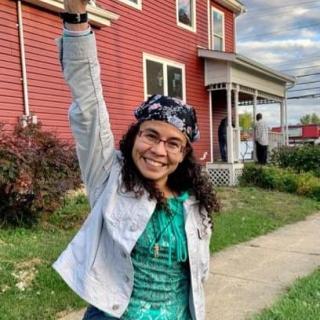On March 22, people around the world celebrated World Water Day, an international holiday established by The United Nations in 1993 to advocate for sustainable management of freshwater resources. This year’s theme was Nature for Water. According to worldwaterday.org:
Environmental damage, together with climate change, is driving the water-related crises we see around the world. Floods, drought and water pollution are all made worse by degraded vegetation, soil, rivers and lakes. When we neglect our ecosystems, we make it harder to provide everyone with the water we need to survive and thrive. Nature-based solutions have the potential to solve many of our water challenges. We need to do so much more with ‘green’ infrastructure and harmonize it with ‘grey’ infrastructure wherever possible. Planting new forests, reconnecting rivers to floodplains, and restoring wetlands will rebalance the water cycle and improve human health and livelihoods.
The Bureau of Land Management (BLM) celebrated this holiday by leasing 345 acres of Wayne National Forest in southeast Ohio to gas and oil companies for unconventional fracking, a process that permanently removes millions of gallons of fresh water from the water cycle and threatens groundwater with contamination from toxic chemicals, in an online auction.
This was the fifth such auction since the BLM announced its plan in fall of 2016 to lease up to 40,000 acres of public land in the Marietta Unit, where there are only 60,000 acres of public land.
In 1905, Gifford Pinchot, the first chief of the U.S. Forest Service famously wrote “[w]here conflicting interests must be reconciled, the question shall always be answered from the standpoint of the greatest good of the greatest number in the long run." Implementing this mission requires some interpretation, but it is difficult to see how someone with knowledge of global climate disasters in recent years, or recent local disasters like the pipeline explosion that occurred in Noble County in February, or the well pad leak and explosion that occurred in Belmont County in March, could conclude that industrializing one of Ohio’s few natural areas is in anyone’s best interest in the long run.
Despite continued public outcry, BLM has shown no sign of altering its plan, nor has Eastern States Regional Forester Kathleen Atkinson, whose office is in Milwaukee, given any indication that she will withdraw her consent for the forest to be fracked.
A recent announcement by the U.S. Forest Service (USFS) that the agency is preparing to revise its Land Management Plan for the Wayne, however, provides a glimmer of hope. In 2012, The U.S. Department of Agriculture, which oversees the Forest Service, adopted a new planning rule that requires significantly more public input and collaboration than was previously required. According to A Citizen’s Guide to National Forest Planning, a 76 page document available for downloadon USDA’s website, the Planning Rule “[o]utreach to members of underrepresented communities should emphasize the many benefits national forests provide to individuals and their families, such as clean air and water, job and career opportunities, and healthy recreation.”
The Land Management Plan revision process will unfold in three phases over the next couple of years, starting with the Assessment phase, which begins this month. Once the assessment is completed, USFS will begin the Plan Development phase, which will include opportunities for public input. Finally, in phase three the plan will be implemented and monitoring will be initiated to ensure the intended desired conditions and objectives are being achieved.
In March USFS began holding public meetings in southeast Ohio to inform the public about the process. Three more meetings are scheduled this month at the following times and locations:
- April 18th 6:30pm-8:30pm22 S Trine St, Canal Winchester, OH 43110
According to USFS representatives, issue-based meetings for public input will be scheduled. It is unclear how many or where these meetings will be held, but Forest Plan Revision Team Leader Lori Swiderski says she welcomes input on how USFS can accommodate the public and be inclusive.
Last March Forest Supervisor Tony Scardina wrote in an op-ed published in the Columbus Dispatch “I am confident in our ability to manage multiple uses in the national forest, including oil and gas development, and can ensure that the Wayne National Forest will continue to provide for a broad range of uses for current and future generations.“
Those who don’t share Scardina’s confidence on the matter will have the opportunity to present information in the form of substantive comments during Phase 2 of the revision process. According to Scardina, comments that do not include citations from peer-reviewed research are unlikely to be given consideration.
If you would like USFS to hold a public meeting in your area, you can contact Lori Swiderski at WaynePlanRevision@fs.fed.us.
To learn more about Ohio’s only national forest and how you can get involved in protecting it, or to buy a Keep Wayne Wild t-shirt, visit KeepWayneWild.com.



